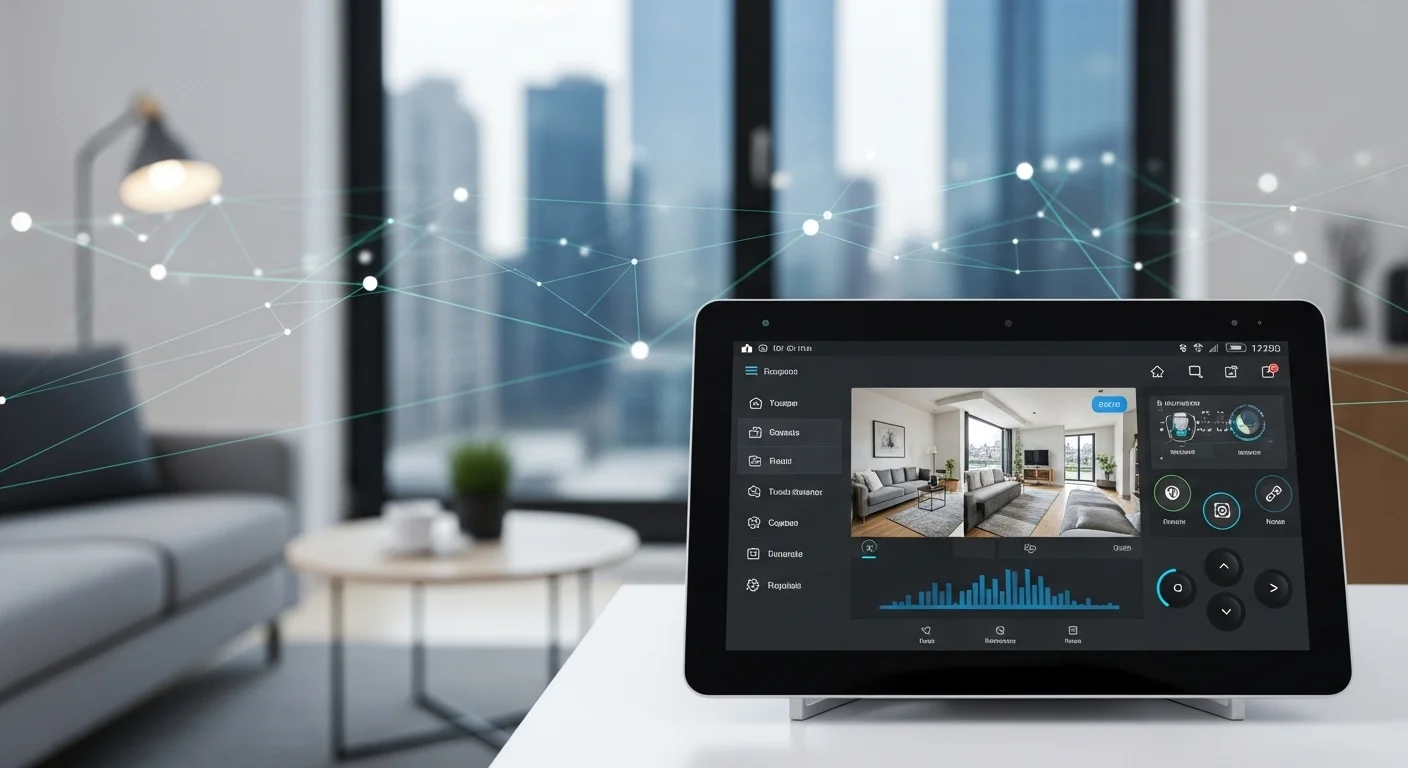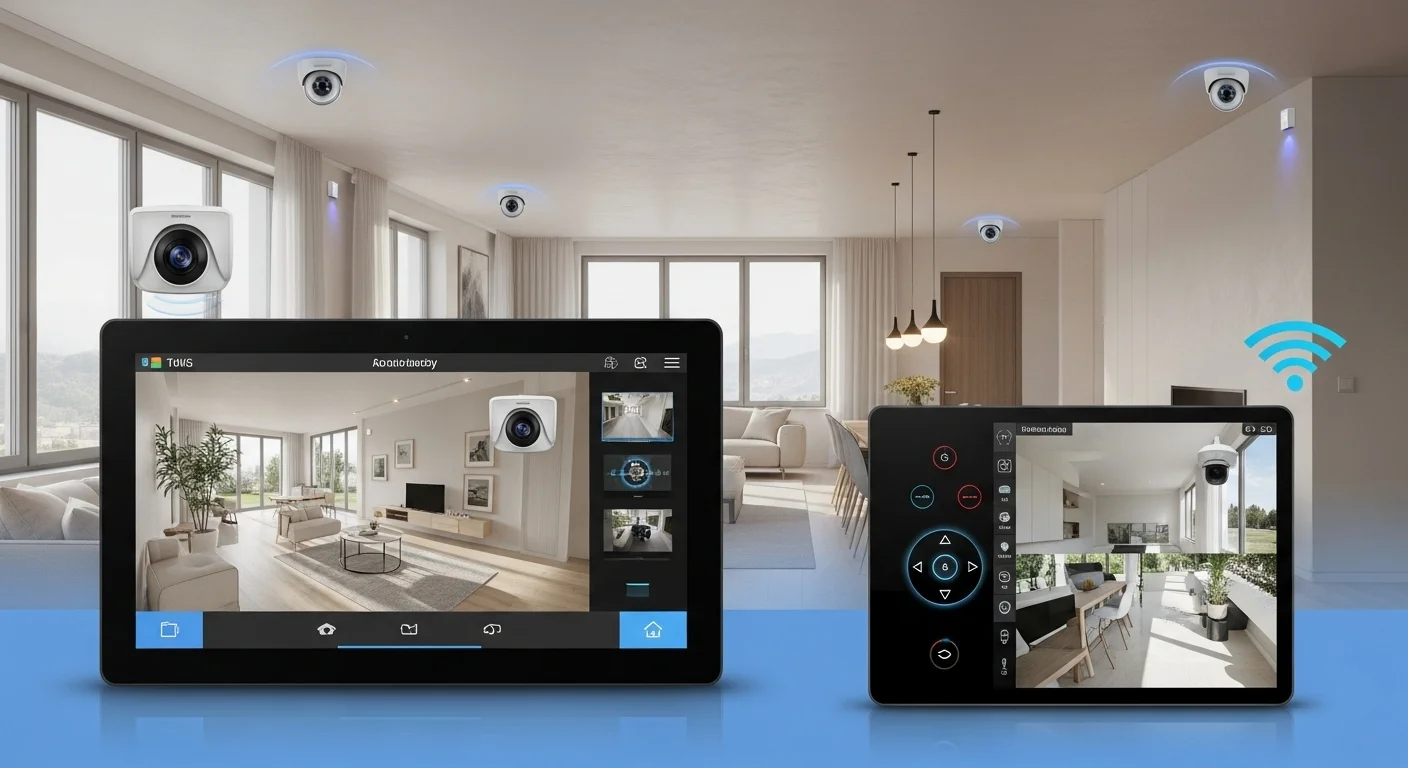Automated Home Security: My Personal Guide to a Smarter, Safer Home in 2025

Executive Summary
This isn't just another tech article; it's a field guide from someone who has lived and breathed smart home technology for years. I remember when 'home security' meant a loud, clunky alarm box and a sticker on the window. Today, it’s an intelligent, living part of our homes, powered by things like AI and the Internet of Things (IoT). In this guide, I'll walk you through what truly makes a great automated security system. We'll look at everything from smart cameras that can tell the difference between a person and a squirrel to the locks you can control from halfway across the world. I'll share my personal experiences with both DIY setups and professional installations and explain why cybersecurity is the one thing you absolutely cannot ignore. Whether you're a homeowner wanting peace of mind or a business owner looking for a smart way to protect your property, this guide is for you. Let's make sense of it all, together.
Table of Contents
Table of Contents
- What Exactly is Automated Home Security? A Look Under the Hood
- Finding Your Perfect Fit: A Guide to Security Systems
- Beyond the Basics: Pro Tips for a Smarter, Safer Home
What Exactly is Automated Home Security? A Look Under the Hood
Years ago, my home security was a double-bolt lock and a very loud dog. Today, my home actively participates in its own protection. That's the magic of automated home security. It’s not just about alarms anymore; it’s about creating a smart, responsive ecosystem that offers incredible peace of mind. For anyone in tech or business, understanding this evolution is key to seeing where our connected world is headed.
At its heart, a modern security setup is a team of internet-connected devices working together. They chat with each other and with you through a central app on your phone, turning your house into an intelligent guardian. I remember my first smart camera; the first time it sent an alert and I saw a package being delivered while I was miles away, I knew things had changed forever. It's that feeling of connection and control. Let's break down the key players on the team:
- Smart Cameras: These are your eyes on the ground. We're talking crisp HD video, night vision, and two-way audio. But the real game-changer is the built-in AI. A good camera doesn't just see movement; it understands it. It can tell you, 'A person is at your front door,' instead of bugging you every time a car drives by. This intelligence is what separates a useful tool from an annoyance.
- Video Doorbells: This is probably the most popular piece of the puzzle. It's your virtual doorman, letting you see and speak to visitors from anywhere. For me, it's meant never missing a delivery and being able to politely tell a salesperson 'no thanks' without even getting up.
- Smart Locks: Going keyless is a huge perk. With a smart lock, I can let a friend in while I'm stuck in traffic or give a temporary code to a contractor. The app log tells me exactly when the door was opened and by whom, which is a fantastic feature. Plus, setting it to auto-lock after 5 minutes has saved me from my own forgetfulness more times than I can count.
- Sensors: These are the unseen heroes. Door and window sensors are simple but effective, letting you know if an entry point is breached. Motion sensors guard open areas, and glass break sensors listen for the specific sound of shattering glass. I also consider my smart smoke and carbon monoxide detectors part of this team—they protect against threats that have nothing to do with intruders.
- Control Panel or Hub: This is the coach of the team, the central point that connects all the devices. It links to your Wi-Fi and often uses other low-power signals like Z-Wave or Zigbee to talk to battery-operated sensors. While most of my interaction is through my phone app, a physical hub with cellular backup is a great safety net if the internet goes down.
The Tech Behind the Magic: AI, IoT, and the Cloud
What makes these systems so powerful isn't just the hardware, but the technology that makes them think. It's a blend of three key ingredients.
The Internet of Things (IoT) is the network itself. Every sensor, camera, and lock is an 'IoT device.' Their ability to communicate is what allows for automation. For instance, I have a simple rule set up: if my front door opens after 11 PM, my hallway lights instantly turn on. That’s IoT in action.
Artificial Intelligence (AI) provides the brainpower. AI is what makes the system smart, not just connected. Beyond telling people from pets, some systems use machine learning to understand your home's normal rhythm. It can flag an anomaly—like a window opening at 3 AM on a weekday—as a potential problem, moving your security from being reactive to proactive.
Cloud Computing is the support system. When your camera records something, the video is often stored safely in the cloud. This means the footage is secure even if a thief steals the camera, and you can access it from anywhere. The cloud also handles sending you those instant notifications that are so crucial.
Why This Matters for Businesses and Tech Pros
This technology isn't just for homes. I've helped several small business owners set up similar systems. A retail shop can use smart cameras and locks to monitor their inventory and manage employee access without the cost of a traditional enterprise security contract. It's truly democratized high-level security.
For my fellow tech professionals, this field is a perfect case study of modern tech architecture. It’s a real-world application of IoT, AI, and cloud services where the stakes are high. Cybersecurity experts, developers, and data scientists are all crucial to making these systems work. Understanding how a smart security system is built gives you a practical look at the future of applied technology.

Finding Your Perfect Fit: A Guide to Home Security Systems & Business Solutions
Jumping into the world of smart security can feel overwhelming. With so many brands and options, how do you choose? It really comes down to your comfort level with technology, your budget, and your specific needs. I’ve gone down both paths—DIY and professional—and can tell you that the 'best' system is the one that fits your life.
System Types: DIY vs. Professional Installation
This is your first big decision. Are you a hands-on person, or do you prefer to have an expert handle it?
DIY Security Systems: Think of brands like SimpliSafe, Ring, or Wyze. They send you a box of gear that you set up yourself. For my first apartment, a DIY kit was a no-brainer. It was affordable, I installed it in an afternoon, and I took it with me when I moved.
The Good Stuff:
- Saves Money: You avoid installation fees, and the hardware is usually cheaper.
- Flexible: Perfect for renters. You can start small and add more sensors or cameras later.
- No Long-Term Contracts: Most offer optional professional monitoring on a month-to-month basis. You're not locked in.
The Trade-Offs:
- You're the Installer: You have to make sure you place sensors correctly to avoid blind spots. It’s on you to get it right.
- You're Tech Support: If something goes wrong, you're the one troubleshooting first.
Professionally Installed Systems: This is the territory of companies like ADT or Vivint. A technician comes to your home, maps out a custom plan, and installs everything for you. When we bought our house, the peace of mind from a professional assessment was worth it.
The Good Stuff:
- Expert Setup: They know the best spots for cameras and sensors. You can be confident there are no gaps in your coverage.
- Effortless: It’s a 'white glove' service. They handle everything and show you how it works.
- Seamless Integration: These systems are often designed to work perfectly as a single, cohesive unit.
The Trade-Offs:
- Higher Upfront Cost: You're paying for hardware, labor, and expertise.
- Contracts are Common: You'll likely need to sign a multi-year contract for monitoring services.
Monitoring: Your Eyes or Theirs?
Once the system is set up, who responds to an alarm? This is a critical choice.
Self-Monitoring: When a sensor is triggered, you get an alert on your phone. It’s up to you to check your cameras and call the police if needed. This is the standard for most DIY systems and has no monthly fee. It works well if you're always near your phone and feel confident you can manage it.
Professional Monitoring: This is a 24/7 service. If an alarm goes off, a trained agent at a monitoring center is alerted. They'll try to contact you first, but if they can't or you confirm an emergency, they dispatch help immediately. This service has a monthly fee, but it ensures someone is always watching out for you—even if you're on a plane or asleep. For me, this is a non-negotiable layer of safety.
The Language of Smart Devices
For everything to work together, devices need to speak the same language. You don't need to be an expert, but knowing a few terms helps.
- Wi-Fi: Connects your cameras and hub to the internet. It's powerful but uses a lot of battery.
- Z-Wave and Zigbee: These are low-power languages perfect for battery-operated sensors. They create a 'mesh' network where devices can pass signals along, making your system more reliable.
- Matter: This is the future, and it's exciting. Backed by Apple, Google, and Amazon, Matter is a universal language for smart devices. A Matter-certified lock will work with a Matter-certified system, regardless of the brand. When you're shopping, looking for the Matter logo is a great way to future-proof your investment.
Smart Security for Your Business
The same tech that secures my home is fantastic for small businesses. The goals are the same: protect your space, control access, and monitor activity.
- Protecting Assets: Cameras in a stockroom or watching a cash register can deter theft. Getting an alert for motion after hours could be the first sign of a break-in.
- Smarter Access: I've seen business owners replace messy key boxes with smart locks. They can give each employee a unique code, see who comes and goes, and easily revoke access for former employees. Temporary codes for cleaning crews are a breeze.
- Remote Management: For an owner who can't be there all the time, being able to check cameras, arm the system, or unlock a door from a phone is incredibly powerful.
Ultimately, choosing the right system is about matching the technology to your real-world needs. By understanding these core options, you can build a solution that truly provides security and convenience.

Beyond the Basics: Pro Tips for a Smarter, Safer Home
Getting your security system up and running is just the beginning. To really get the most out of it, you need to treat it like the powerful piece of technology it is. Over the years, I've learned that a few key practices can make all the difference between a good system and a great one. These are the strategies that elevate your setup, ensuring it's both secure from digital threats and seamlessly integrated into your life.
Cybersecurity: Your #1 Priority
This is the part I can't stress enough. Your security system is connected to the internet, which means it can be a target for hackers. A compromised system isn't just a privacy risk; it's a physical one. Securing it is the absolute first thing you must do.
- Password Discipline is Everything: Never, ever use the default password. Every account—your app, your Wi-Fi—needs a long, unique, and complex password. I use a password manager to create and store mine; it's the easiest way to stay secure.
- Turn On Two-Factor Authentication (2FA): If a service offers 2FA, use it. It means that even if someone steals your password, they can't get in without a code from your phone. This single step is one of the most effective ways to block unauthorized access.
- Lock Down Your Wi-Fi: Your router is the front door to your digital life. Use a strong password with WPA3 encryption. I also recommend creating a separate 'guest' network for visitors and, if you're savvy, putting all your smart devices on their own isolated network.
- Always Be Updating: Manufacturers release updates to patch security holes. Set your devices and apps to update automatically. Running on old software is like leaving a window unlocked.
- Watch Out for Phishing: Be skeptical of emails claiming to be from your security company. Hackers are clever. Always log in to your account through the official app or website, never through a link in a suspicious email.
- Read the Fine Print: Know how a company handles your data, especially video clips. I always favor companies that are transparent about their privacy and security policies.
Unlocking True Automation for a Smarter Life
Now for the fun part. A great system doesn't just react; it anticipates. You can create intelligent routines that make your home safer and more convenient.
- Create 'Scenes' for Your Life: Most systems let you bundle actions into a single command. I have a few favorites:
- 'Away' Scene: One tap arms the system, locks the doors, turns off the lights, and adjusts the thermostat.
- 'Goodnight' Scene: This arms the perimeter sensors but leaves the interior motion sensors off, so I don't set it off on a midnight snack run. It also locks the doors and dims the lights.
- 'Panic' Button: A command that I hope to never use, but it's there. It can blast the siren, turn on every light in the house, and instantly notify the monitoring center.
- Use Geofencing: This is brilliant. The system uses my phone's location to know when I'm gone. It can arm itself automatically as I drive away and disarm when I pull into the driveway, so I never have to fumble with the app with my hands full of groceries.
- Integrate Your Whole Smart Home: The real power comes when your security system talks to your other smart devices. For example, if my smart smoke alarm goes off, I have a rule that automatically unlocks my doors for an easy escape, turns on all the lights for visibility, and shuts down the HVAC to stop smoke from spreading. That's a level of safety a simple alarm could never offer.
Keeping Your System Ready for the Future
This technology moves fast. Staying aware of what's next helps you make smart choices today.
- The Rise of Matter: I mentioned it before, but it's worth repeating. As you buy new gear, look for the Matter logo. It's your ticket to an interoperable smart home where everything just works together.
- Edge AI (On-Device Intelligence): I'm personally most excited about this. To improve privacy and speed, more cameras are doing AI processing right on the device ('at the edge') instead of in the cloud. This means faster, more private alerts because the video doesn't have to be sent to a server for analysis.
- Predictive Security: The future is about stopping things before they happen. AI will get better at spotting unusual patterns, like a car circling the block or the faint sound of a window being pried open, and flagging them as potential threats.
By focusing on strong cybersecurity, getting creative with automations, and keeping an eye on the horizon, you can ensure your system delivers the best protection and experience possible. You're not just installing gadgets; you're building a smarter, more responsive, and truly secure home.
Expert Reviews & Testimonials
Sarah Johnson, Business Owner ⭐⭐⭐
The information about automated home security is correct but I think they could add more practical examples for business owners like us.
Mike Chen, IT Consultant ⭐⭐⭐⭐
Useful article about smart home security. It helped me better understand the topic, although some concepts could be explained more simply.
Emma Davis, Tech Expert ⭐⭐⭐⭐⭐
Excellent article! Very comprehensive on automated home security. It helped me a lot for my specialization and I understood everything perfectly.



